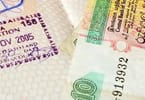The international community demonstrated an admirable response to Nepal’s earthquake in April 2015. Rescue and relief crews from over 40 countries instantly mobilized and came to the country’s assistance. Many governments, the UN and NGOs joined in the rescue and recovery efforts. Some tourists who were in Nepal at the time of the quake, remained in the country to play an active role in rescue and relief efforts.
The international tourism industry demonstrated immediate support for Nepal in a number of ways. Many tourism businesses which work closely with Nepal, including the Australian based Intrepid Travel and transnational tourism associations including the Adventure Travel Association and PATA (Pacific Asia Travel Association) raised funds for Nepal.
PATA also established and completed an extensive Nepal Rapid Response Tourism Recovery Taskforce report, a joint volunteer project of selected PATA tourism recovery specialists and Nepalese tourism industry leaders. The taskforce report was presented to Nepal’s tourism industry in June 2015. The report sought to provide a roadmap for Nepal’s tourism recovery. As a contributor to the taskforce, it has been good to see that many of the key recommendations (all of which were nominated by the Nepalese members of the taskforce) have been implemented – notably familiarisation tours by influential travel journalists and travel agents. Since the April 25 earthquake a growing number of volunteer tourism groups have visited Nepal to assist in post-earthquake relief work and continue to demonstrate their solidarity with Nepal and is people.
Despite the many positive expressions of support from the global tourism industry for Nepal, the most tangible form of support which Nepal is currently lacking and really needs are international visitors. The message which Nepal’s tourism industry has sought to communicate and which deserves to be supported by the global tourism industry is simple. Tourists who visit Nepal now will aid tourism recovery while being rewarded by one of the world’s outstanding tourist experiences.
In November 2015 I was invited by SAMARTH, a British funded organisation based in Kathmandu which supports projects to alleviate poverty in Nepal to give a keynote session at a workshop on tourism recovery. Although I had been a participant in PATA’s tourism recovery taskforce and was more aware than most non-Nepalese that Nepal was largely open to tourists it still came as a surprise that the extent of earthquake damage, especially in the Kathmandu valley was far less than media coverage had suggested.
Since the earthquake, most of the trekking routes which had sustained damage during the quake and its aftershocks were cleared and safe (most notably the path to Everest Base Camp.) However, the overwhelming impression gained from first hand observation and discussion with Nepalese tourism professionals in a short visit to Nepal was that slump in visitation has incurred a devastating impact on Nepal’s tourism industry. This has extended to a broader impact on Nepal’s economy. The impact of the earthquake and the false perceptions that Nepal was in “ruins” was compounded by India’s unofficial but damaging fuel blockade of Nepal which has been in force since October 2015.
The fuel blockade is (from an international perspective) Nepal’s invisible crisis. The absence of dead bodies and damaged buildings has generated little international media coverage. However, the severe shortages of gas to heat homes and cook, the lack of fuel for motor vehicles and aircraft and its disruption to electricity supply affects every person in Nepal including tour operators, hoteliers and airlines.
Despite the fuel disruptions, it was clear to me and to most visitors to Nepal who have commented on the internet, that Nepal is fully open and warmly welcomes international visitors. Translating the global tourism industry’s genuine support for Nepal into tangible benefits for our tourism colleagues in Nepal involves one key task.
Tell your clients and your colleagues that Nepal is safe, welcoming, has plenty of accommodation in all categories and offers incredible value for money as one of the world’s most scenically spectacular, culturally diverse and spiritually inspiring destinations.
Dr Pranil Upadhayaya was the lead organiser of the SAMARTH Nepal Tourism recovery workshop at which I presented in Nepal. Pranil and his colleagues gathered 80 tourism leaders to attend the one day workshop in Kathmandu. The abiding impression I gained from the workshop was the extremely high level of professionalism of Nepal’s tourism industry managers and staff. Attendees at the workshop included trekking company managers, tour operators, hoteliers, travel agents, adventure and specialist tour operators, tour guides, airlines, tourism industry associations, tourism academics and government tourism officials. Part of the workshop sessions were interactive. The abiding impression I gained from working with Nepalese tourism professionals was their high degree of skill and commitment to excellence.
International tour operators working with Nepalese industry partners in Nepal have the choice of working with reliable and skilled partners able to cater to tourists from many countries speaking multiple languages. One quality which gives Nepal a competitive edge as a tourism destination is the genuine hospitality of the Nepalese people.
However, Nepal’s many well trained, dedicated and tourism industry professionals and the companies which employ them urgently need a resurgence in tourism to guarantee the future viability of the industry and its skilled workforce. Pranil Upadhayaya’s research in Nepal’s post-earthquake recovery plan states that between May – December 2015 tour operators and trekking companies lost a combined US$75 million dollars out of US$100 million in losses incurred by Nepal’s tourism industry. Although Pranil forecasts recovery in Nepal’s trekking market during 2016 he is less confident about the prospects for tour operators but would be delighted to be proven incorrect.
There are many compelling reasons why tourist visitation is vital to Nepal’s post- earthquake recovery. I will highlight one. During my brief visit to Nepal I visited four world heritage tourism sites At each site, foreign visitors are required to pay an entry fee. The amounts involved are relatively modest and but most importantly every rupee/cent is used for the maintenance of the site visited. Several of the sites I visited sustained a degree of earthquake damage and it was worthwhile to clearly see how the entry fee was being spent.
The restoration and preservation of Nepal’s cultural treasures such as Durbah Square in Kathmandu and Patan, the heritage village of Bhaktapur and the Bodhnath Stupa in Kathmandu can only be guaranteed by a steady stream of paying visitors.
The importance of tourism to Nepal extends far beyond purely economic dimension. Since Nepal opened up to international visitation in 1950 it has become one of the world’s great aspirational destinations as the home of the world’s highest mountains including the colossal Mt Everest, and as a destination where two of the world’s great faiths Hinduism and Buddhism co-exist harmoniously in shared heritage sites and current worship.
At the top of the new year’s resolution to tourism professionals for 2016, spread the word that Nepal is a must visit destination for 2016 and beyond. Your clients will thank you and so will Nepal.
Dr David Beirman is a Senior Lecturer in tourism at the University of Technology-Sydney
WHAT TO TAKE AWAY FROM THIS ARTICLE:
- Although I had been a participant in PATA's tourism recovery taskforce and was more aware than most non-Nepalese that Nepal was largely open to tourists it still came as a surprise that the extent of earthquake damage, especially in the Kathmandu valley was far less than media coverage had suggested.
- In November 2015 I was invited by SAMARTH, a British funded organisation based in Kathmandu which supports projects to alleviate poverty in Nepal to give a keynote session at a workshop on tourism recovery.
- Despite the fuel disruptions, it was clear to me and to most visitors to Nepal who have commented on the internet, that Nepal is fully open and warmly welcomes international visitors.






















